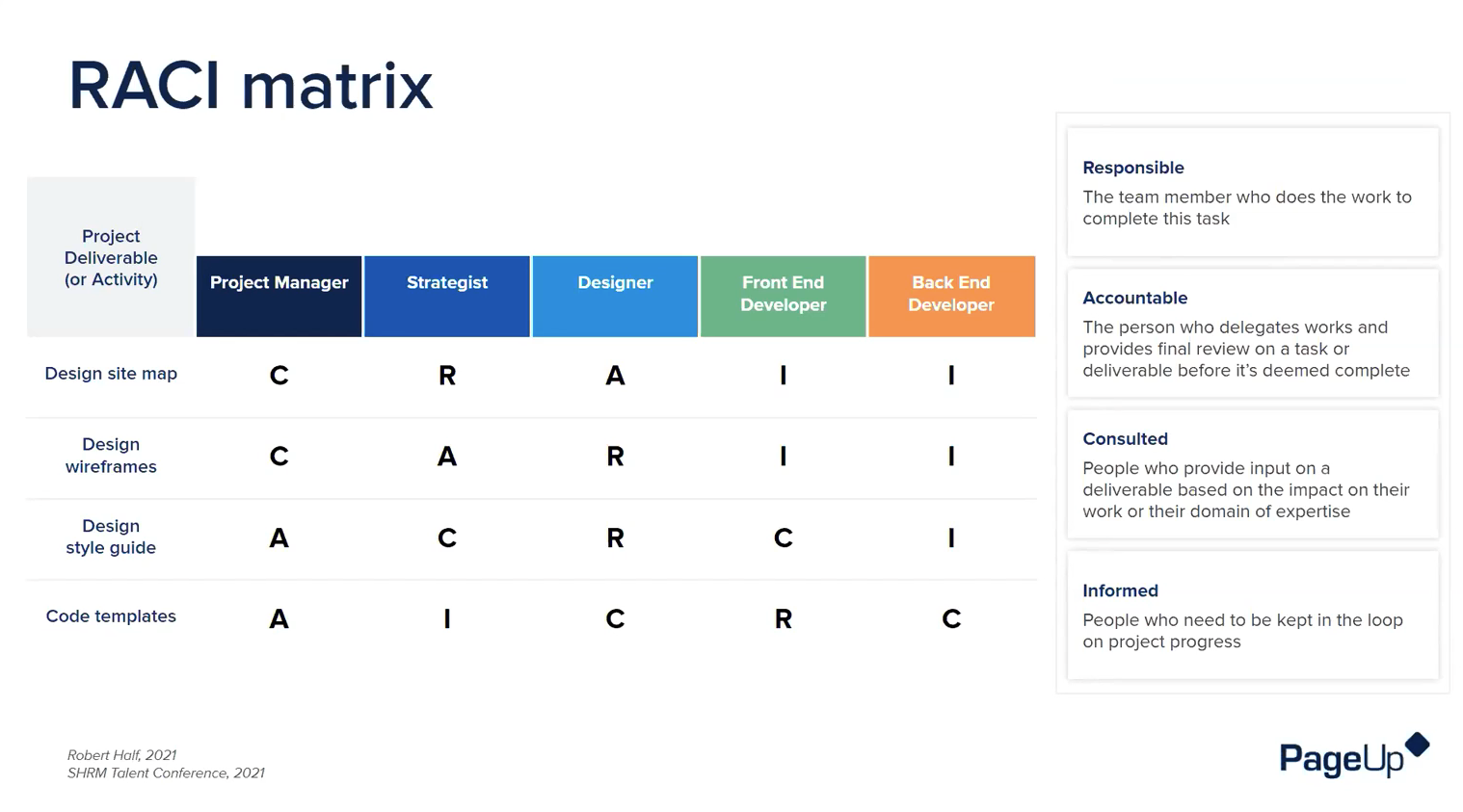While buying new HR tech is exciting, implementing it can seem daunting. But, with the right strategies and outlook, you can ensure a smooth and successful implementation that delivers results from day one.
With teams stretched thin, and what seems like hundreds of competing priorities: getting stakeholders aligned and bought in on a new HR tech solution can be tough. PageUp data from the past few years shows that hiring teams are experiencing higher volumes of work —to be successful, teams need the right systems in place to support them. Sheena Murphy, Manager of Customer Success, North America, PageUp, says:
“Post-COVID, recruiter workloads have increased as many hiring teams have become leaner. In the US, the average of 25 open roles per month, increased to 31 open roles per recruiter, per month. That’s an increase of 24%, or essentially one work day’s worth of work that’s been added on for recruitment teams.”
Whether you’re onboarding a new careerscareer site, an ATS, or an entire Talent Management suite, here’s our 5 steps to ensure a stress-free, on-time implementation:
Step 1: Choose the right vendor
The first —and arguably, most important —step of any successful implementation is making sure you partner with the right vendor. Find a provider who understands your industry, your goals and any compliance requirements: it’s vital for the implementation team to understand your unique needs to ensure a solution is deployed to suit.
The right vendor will support you every step of the way to ensure your organisationorganization’s investment is worthwhile: they’ll act as an extension of your team, a partner. Fleur White, Senior Delivery Consultant in Professional Services, PageUp explains:
“The implementation must be a seamless partnership journey from start to finish, with a vendor offering dedicated implementation resources and having industry-specific compliance requirement knowledge.”
Step 2. Identify stakeholders and build a team
Think about who needs to be involved in the project: who are the key stakeholders? Build a working group that includes the relevant people across business areas to ensure a holistic, well-rounded approach.
Every leader, department, and team have competing priorities. It’s important to put yourself in the shoes of people in the room and identify where this project sits for them. By getting key stakeholders on your side right from the get-go, you’ll ensure the right people are involved at the right time —and your implementation is more likely to run on time, and to plan. Look at your organisationorganization: who will be affected by the HR software implementation, and how?
Each organisationorganization will be a little different, but you might need to consult cross-functionally with:
- IT / Developers
- Finance
- Hiring team (SMEs, direct users, and secondary users)
- Marketing
- Legal
- Sales
- End users, super users, and internal influencers
Each of these departments will have different levels of involvement, at different project stages. This can be tracked using a RACI matrix —see more about this in the next step.
Tip: Designate a sponsor to champion the implementation project
Still in the early stages of seeking new HR software? Check out our guide for building a business case for a HR tech solution.
Step 3: Plan your project and manage expectations
Failing to plan means planning to fail -—a comprehensive project plan that outlines the desired outcomes, ROI, and metrics for success is worth its weight in gold. It’s important to be thorough and take the time to define a plan that aligns with overarching organisationalorganizational goals.
Set a clear timeline that allows for flexibility and accommodates learning as you go, which is important for keeping on track. From the beginning, clarify the allocation of hours and resources required for the implementation.
What milestones will you use to track progress? These may look like:
- Scope of the project agreed to and signed off
- Implementation, broken up into stages
- Quality assurance testing completed
- User acceptance testing completed
- Deployment
- Successful transition to support

Now you can take your stakeholders, milestones and project plan and include them in a RACI matrix. It’s a great tool to clearly define roles and responsibilities, ensuring accountability and decision-making processes at-a-glance.
Step 4: Communicate effectively
Great communication is critical. Without it, many projects experience avoidable delays, or in some circumstances, fall down. To set the ball rolling, include the development of a change management plan early in the process, and communicate updates regularly with all stakeholders.
When creating this plan, it’s important to consider:
- How often do you want to set up regular project check-ins? This cadence can be different for different stakeholders.
- What communication channels work best? Perhaps email is enough for some, but not others.
- What are your key messages for each stakeholder group?
Derek Story, Human Resources, College of Business and School of Communication, Illinois State University, shared how his institution is approaching this:
It’s a fine dance, don’t be afraid to over-communicate a little if you’re wavering on should you, or should you not communicate it —find a way to communicate a piece of that, keep your door open as you’re doing the implementation, make sure people are invited ‘optionally’ and you’re clear on how much time people are expected to commit to an implementation project.
Implementation is the perfect time to create a compelling story and share the vision or ‘why’ with end users. What will be the biggest impact on your hiring managers? How will this change your recruiters’ lives? This vision is important to share —and important for key users to buy into —as it will help to push through any roadblocks that occur throughout the change management process. It’s great to champion those who will help drive adoption and support the implementation, and involve them early in the roll-out process.
Step 5: Identify and mitigate risks
For PageUp Head of Customer Success APAC, Tara Bodycote, risk mitigation is a crucial consideration in any project:
“Identify risks early and put mitigation plans in place. Test properly: have a tried and tested approach.”
It’s time to play devil’s advocate: where could things go wrong? What are the potential challenges and obstacles that you may encounter throughout implementation? Conduct a comprehensive risk assessment to identify, and implement mitigation plans that address these risks and provide creative solutions.
It’s important to look at how your vendor supports testing. Without proper planning, the testing stage is where timelines often get pushed out. To avoid this, look at how testing of your new HR software is factored into your project plan. Your vendor should provide:
- Test scenarios and scripts
- Support and guidance for involving your stakeholders in testing
- Clear guidelines and communication for testing parameters
Plan to involve the right people in user acceptance testing. The goal is to cover all test scenarios from different user perspectives.
Conclusion
By following these five steps, you can ensure a successful HR software implementation for your next tech investment. From selecting the right vendor, to communication and risk mitigation, each step will help you streamline the journey to go-live. Remember: success lies in collaboration, planning, and adaptability throughout the implementation journey.
At PageUp, we work with you every step of the way to help you get the most from your new solution —throughout implementation, and beyond. We’re proud to offer ongoing all-inclusive customer support —so you can say goodbye to extra fees and hidden costs, and hello to technology you’ll love to use. Get in touch to see how PageUp can transform your talent acquisition.
Additional resources:
If you enjoyed this blog, check out the replay of our webinar, Secrets to software implementation successSecrets to software implementation success, where our experts share their secrets, experiences and best practice in delivering successful implementations.
Fresh insights for HR
Stay up to date with HR trends, tips and more when you sign up for our industry newsletter





